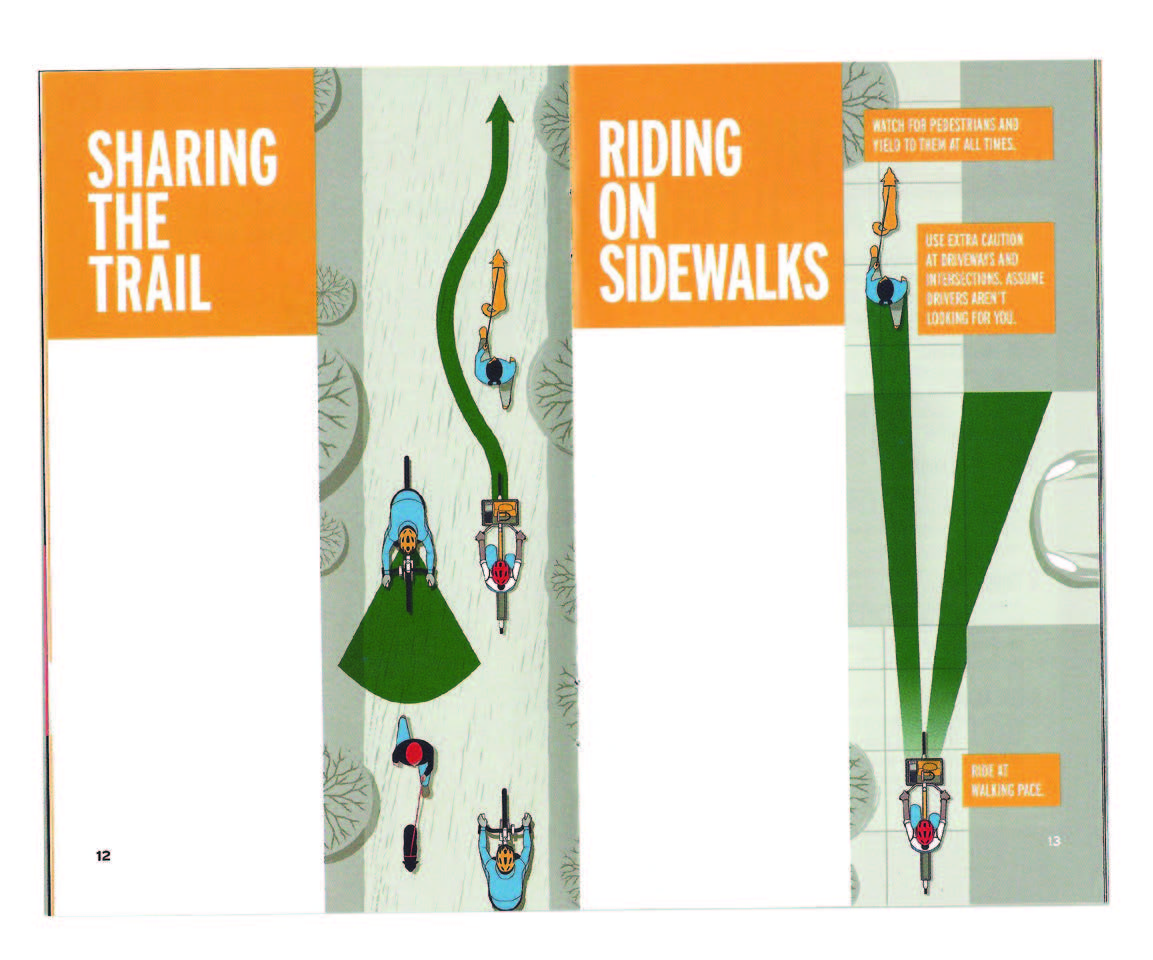SMART CYCLING GUIDE FOR NEWBS

Sharing the Trail
Give a clear signal when passing either by using a bell or your voice.
The most dangerous part of a trail is usually where another trail or road crosses,so be cautious and yield to any crossing traffic.
Always be predictable by riding in a straight line and warn others when you are turning, slowing, passing or stopping.
When riding with others, stay on your side of the trail
Principles of Traffic Law
In all 50 states, bicyclists are required to follow the same laws as other drivers in most circumstances. There are a few key principles that underpin all U.S. traffic laws.
First Come, First Served
Everyone on the road is entitled to the space they’re using. If you want to use someone else’s space, you must yield to whoever is using it.
Ride on the Right
Never ride against traffic—this puts you in a position where drivers don’t expect you to be.
Yield to Crossing Traffic
When you come to an intersection, if you don’t have the right of way, you must yield.
Speed Positioning
The slowest vehicles on the road should be the furthest to the right and you should always pass on the left.
Lane Positioning
Some lanes are wide enough for a car and bike to operate safely side by side. Ride a safe distance from the curb or parked cars—never ride in the gutter. When a lane is too narrow to share the road safely, ride in the middle of the lane.
Intersection Positioning
When approaching an intersection, always use the rightmost lane going in the direction you’re riding. Follow ALL Street Signs, Signals, and Markings.
KEEP READING THE CYCLING GUIDE!
Fitting a Helmet
When you shake your head from side to side, a correctly fitted helmet will stay in place.
Two-fingers width between eyebrows and helmet.
Side straps make a “Y” below the ear.
Less than ½-inch between your chin and the strap.

Riding at Night
Always use a white headlight and red rear light.
ABC Quick Check
A: Air
If your tires give a bit when you press with yourthumb, they need some air.
B: Brakes
When you squeeze your brakes hard, you should still be able to fit your thumb between the brake levers and the handlebars. Check that your brake pads aren’t worn out—if they are, replace them.
C: Chain, Crank, Cassette
Make sure your chain is running smoothly—lightly oiled and free of rust and gunk—by spinning it backwards a few revolutions.

KEEP READING THE CYCLING GUIDE!
Quick Release
If your bike has quick release wheels, make sure the release levers are securely closed.

Locking Your Bike
To lock your bike, use a U-shaped lock, a heavy steel cable lock or a combination of the two. Secure both wheels and the frame to an immovable object.

CRASH CHECKLIST
Get out of the street if possible, but don’t move if you are in pain.
Call 9-1-1 or have someone else do it.
If your crash involves a car, obtain the driver’s information (name, license plate number, contact, and insurance information) If there are serious injuries involved, request a crash report from the police. If no injuries, fill out a “blue form” from the police ASAP, including witness, insurance, and contact information for everyone involved in the crash.
Take photos of the crash location, road condition, signs/signals, and condition of your bicycle and the car.
Go to the hospital to get checked even if you think you’re OK.






